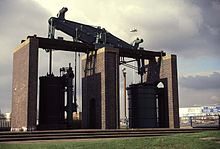Regency Personalities Series-Boulton and Watt
Regency Personalities Series
In my attempts to provide us with the details of the Regency, today I continue with one of the many period notables.
Boulton and Watt
1775-1895

Boulton and Watt as an early British engineering and manufacturing firm in the business of designing and making marine and stationary steam engines. Founded in the English West Midlands around Birmingham in 1775 as a partnership between the English manufacturer Matthew Boulton and the Scottish engineer James Watt, the firm had a major role in the Industrial Revolution and grew to be a major producer of steam engines in the 19th century.
The partnership was formed in 1775 to exploit Watt’s patent for a steam engine with a separate condenser. This made much more efficient use of its fuel than the older Newcomen engine. Initially the business was based at the Soho Manufactory near Boulton’s Soho House on the southern edge of the then-rural parish of Handsworth. However most of the components for their engines were made by others, for example the cylinders by John Wilkinson.
In 1795, they began to make steam engines themselves at their Soho Foundry in Smethwick, near Birmingham, England. The partnership was passed to two of their sons in 1800. William Murdoch was made a partner of the firm in 1810, where he remained until his retirement 20 years later at the age of 76. The firm lasted over 120 years, albeit renamed “James Watt & Co.” in 1849, and was still making steam engines in 1895, when it was sold to W & T Avery Ltd..
The business was a hotbed for the nurturing of emerging engineering talent. Among the names which were employed there in the eighteenth century were James Law, Peter Ewart, William Brunton, Isaac Perrins, William Murdoch, and John Southern.
Smethwick Engine, Thinktank science museum, Birmingham, manufactured 1779.
Whitbread Engine, Powerhouse Museum, Sydney, manufactured 1785.
Crofton Pumping Station manufactured 1812.
Kew Bridge Steam Museum manufactured 1820.





